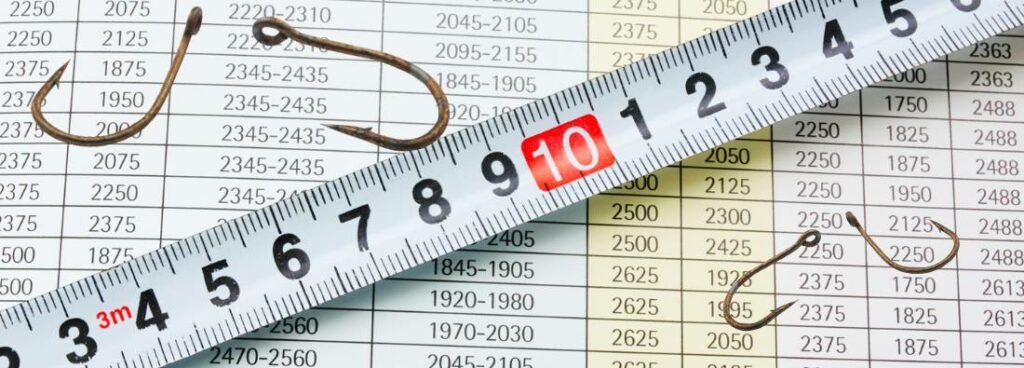Stories Worth Reeling In...
Last Updated on September 19, 2023
Hook, line, and sinker – that’s the deal when it comes to fishing, right? Well, not quite. If you’ve been in the angling world for a while, you know how important choosing the right fishing hook size and style is.
It’s not just about hooking that prized catch but also ensuring it doesn’t wriggle off before you can say, “fish on!” This post will dive into the nitty-gritty of picking the perfect hook for your next fishing adventure. So let’s get hooked!
Table of Contents
To choose the right fishing hook, consider your target fish species, your bait, your fishing technique, and the location. Pick a hook that matches the fish’s size and mouth structure, complements your bait and technique, and suits the fishing environment. This way, you’ll increase your chances of a successful catch while enjoying your angling adventure.
There’s much more to choosing a fishing hook than meets the eye. To make sure you’re armed with the right gear, consider these factors:

Not all hooks are created equal. When targeting a specific fish species, you must choose a hook that suits its size, shape, and mouth structure. For example, you wouldn’t use a small hook meant for panfish when chasing a monster catfish!
Your bait choice will also influence the hook you use. For instance, if you’re using live bait, a hook that allows the bait to swim freely and naturally is your best bet.
On the flip side, if you’re using artificial lures, a hook that securely holds the bait and doesn’t impede its action is essential.
Whether you’re jigging, trolling, or fly fishing, your technique will affect the hook you choose. Certain hooks are designed specifically for particular fishing methods, so ensure you use the right one for the job.
Your fishing spot may also influence your hook choice. Fishing in an area with heavy cover or structure might require a weedless hook, while open water requires a different approach.
Fishing hook sizes can be confusing, especially with numbers needing clarification. Here’s the deal: hook sizes start at 32 (the smallest) and go up to 1.
After that, the hooks get larger with a slash and a number, like 1/0, 2/0, and so on. The larger the number, the bigger the hook.

Hook size charts are your best friend when it comes to deciphering those pesky numbers. These charts visually compare different hook sizes, making it easy to pick the right one for your needs.
Using the correct hook size is crucial. Too small, and you risk losing your catch. Too big, and the fish won’t bite. The key is to find the sweet spot – a hook that’s just right for the fish you’re after.
Choose a hook style based on your target fish, bait, and fishing technique. For example:
Know your target and choose a hook that matches its size and mouth structure. For instance, a wide-gap hook works well for fish with big mouths, while a smaller hook is better suited for fish with smaller mouths.
Different hook styles work best for specific fishing techniques. Be sure to pick a hook that complements your chosen method.
Match your hook to the bait you’re using. For example, a thin wire hook is excellent for delicate live baits, while a sturdy hook works well with chunky cut bait.
Pay attention to the importance of hook strength. You want your hook to stay intact and break under pressure! Choose a hook made from high-quality materials that can withstand the fight of a feisty fish.
Choosing the right fishing hook size and style is crucial to angling success. By considering factors like the target fish, bait, fishing technique, and location, you can make an informed decision that will increase your chances of landing that dream catch.
Remember, it’s not just about getting hooked; it’s about staying hooked!
So gear up, get out there, and reel ’em in!